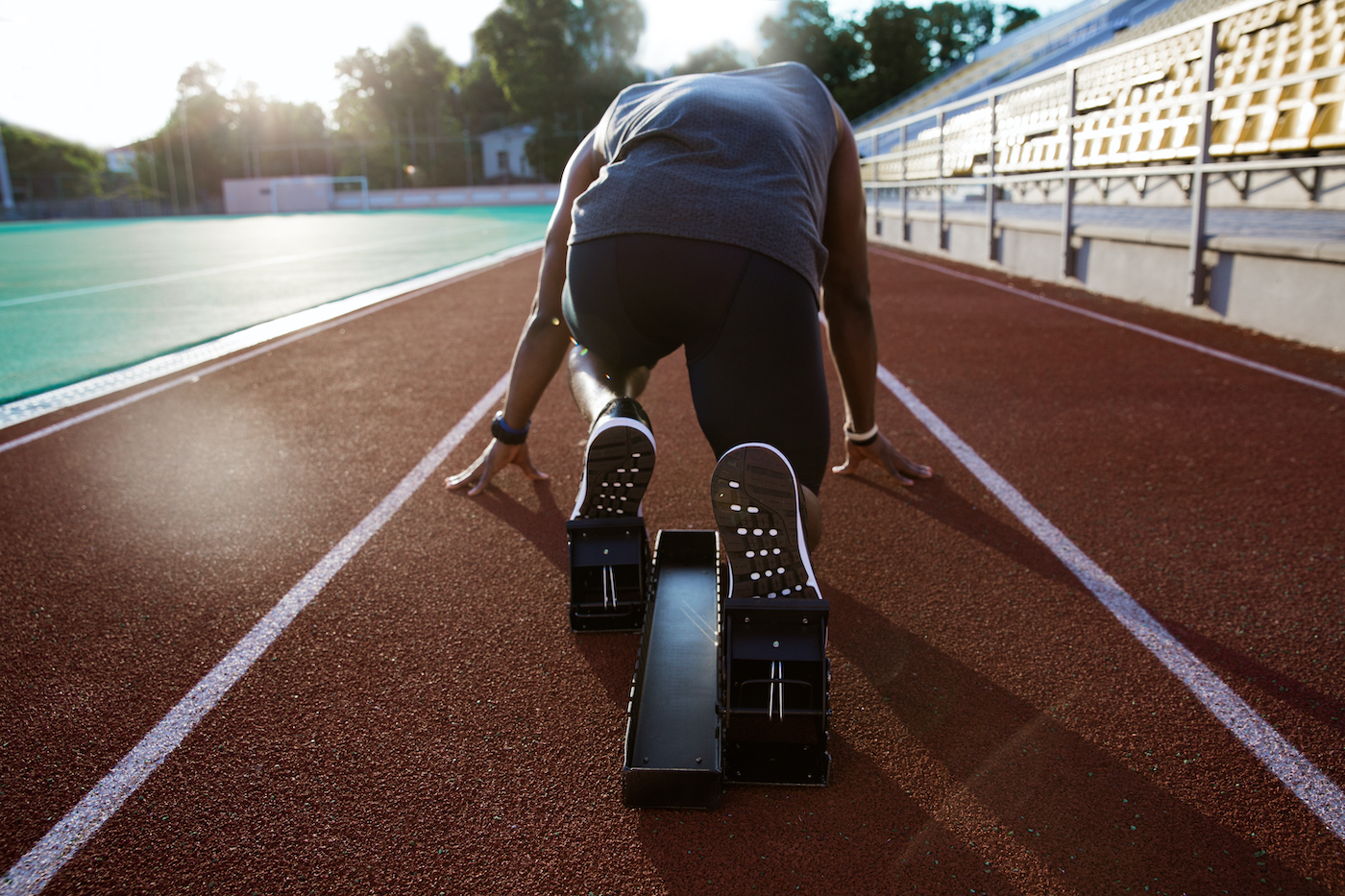
Low back pain is a common symptom reported by both college and professional athletes. Research shows that nearly a third (30%) of athletes complain about back pain at some point in their careers. The severity of this back pain can vary. In some cases, the athlete might develop muscle tightness from the force of swinging a bat, club, or racket. In other cases, there might be a herniated disc or severe disc degeneration that requires surgery.
Surgery is an intimidating word for most athletes. It often means the end of the season or a significant number of missed games. However, modern surgical practices – including total lumbar disc replacement (TLDR) – reduce the risk of complications while speeding up recovery times. More athletes are returning to the field ready to perform at their best with healthy spines.
Athletes don’t have to fear lower back pain and what it could mean for their performance levels. Learn more about TLDR and what it means for the athletic world.
Understanding Lumbar Disc Injuries
The lumbar spine is made up of five bones in your lower back. These are typically the largest vertebrae in your spine. Each of your vertebrae is protected by soft, flexible cushions called discs. They prevent your bones from rubbing together and allow you to move, bend, and twist comfortably.
Many lumbar disc injuries occur when these discs crack, break, or wear out. For example, a herniated disc occurs when the vertebrae push the disc out of place – often into the nerve canal. Broken and damaged discs cause varying levels of pain for athletes, ranging from mild discomfort to pain so severe they can barely walk. While these injuries could be caused by a significant hit or impact, some athletes experience back pain from overuse or from the natural wear of the body.
There are a variety of symptoms that indicate whether an athlete is suffering from a lumbar disc injury. Athletes might experience back pain and discomfort, along with numbness or tingling in their legs. In severe cases, they might even experience a loss of bowel control because the broken disc is affecting the nerves. It is important for doctors to recognize these symptoms early on in order to intervene and treat the injury.
Traditional Treatments for Lumbar Disc Injuries
If an athlete experiences lower back pain, it doesn’t necessarily mean they will need surgery. There are plenty of non-surgical options that doctors and training staff will recommend before considering a TLDR operation. Here are a few preliminary options along with potential surgical interventions that can help an athlete reduce their back pain.
Conservative Treatments
The first step to recovery from any injury is to rest. The doctor might recommend placing an athlete on an injured reserve list so they will stop putting pressure on their back during this time. While they are recovering, the athlete might attend physical therapy appointments, do a series of stretches each day, and take anti-inflammation and pain medications to treat the issue.
If the pain goes away, the athlete might be approved to return to the field.
Minimally Invasive Procedures
The next step for treating lower back pain is to try minimally-invasive procedures. For example, the doctor might recommend a series of epidural injections to reduce pressure on nerve cells. Disc decompression therapy might also be considered on a case-by-case basis. This treatment occurs with a fully clothed patient and a decompression machine.
Surgical interventions
In the event that more conservative treatments don’t work, surgical interventions might be the best option to help the athlete reduce or eliminate their lower back pain. A doctor can conduct a discectomy (removal of one of the spinal discs that cushion the vertebrae) or a laminectomy (removal of the lamina, which is a part of the vertebrae itself).
Limitations of Traditional Treatments for Athletes
Doctors, trainers, and athletes all have the same goal: to help the player recover quickly and effectively so they can return to the game. However, some limitations can slow down the process. You can’t rush healing, no matter how surgical advancements improve over time.
-
- Prolonged recovery times: spinal recovery can be a slow process that some athletes and coaches might want to rush. This can cause more harm to the spine.
- Reduced mobility and activity level: the athlete might experience reduced mobility that prevents them from returning to their previous form.
- Risk of recurrent injuries: while the athlete might be relieved of lower back pain in the short run, the pain could return if they continue to push themselves too hard.
- Limited lifespan of traditional treatments: not all medical treatments offer permanent solutions. An athlete might need to meet with a spine specialist annually or every few years to make sure they are healthy.
Doctors will usually take a multi-pronged approach to help all patients (including athletes) reduce their pain levels while retaining their range of motion. However, side effects often can’t be avoided, even with the best care.
What is a Total Lumbar Disc Replacement (TLDR)?
TLDR is an operation that removes damaged, worn-out, or bulging discs from the spine and replaces them with artificial components. This operation is typically done to one disc, but your doctor might recommend replacing multiple discs if they are damaged. This is an outpatient procedure that usually only lasts a few hours. The patient can then return home to start the recovery process.
There are multiple types of artificial discs used in TLDR but they all serve the same purpose: simulating and outlasting the natural discs in the human body. These discs are meant to last longer while returning the range of motion the athlete previously enjoyed.
TLDR is an alternative to spinal fusion. It protects the mobility of the patient while reducing their discomfort. Most importantly for athletes!
Lumbar Disc Arthroplasty for Athletes
Many athletes are good candidates for TLDR. This is because they usually are in good health, eat well, don’t smoke, and aren’t obese – factors that can affect the healing process or make a patient ineligible for surgery. Their peak physical form makes them ideal patients.
However, there are some special considerations that can limit whether this operation is right for the athlete at the time. Most notably, athletes cannot rush their recovery. They need to stay away from the field until a doctor has cleared them to return to practice. Too often, the pressure to perform drives an athlete to return to the game before an injury is fully healed.
Athletes also need to weigh the potential risks and complications of this surgery, as every medical procedure comes with risks.
TLDR Recovery and Rehabilitation for Athletes
There is good news for athletes who are worried about the recovery process for TLDR: most training teams and physical therapists are qualified to help athletic professionals recover fully before returning to the field. Athletes often meet with members of the training staff to complete physical therapy exercises and other postoperative care steps. They can report on their pain levels and discuss the recovery process with in-house health professionals.
An objective, third-party doctor or surgeon should clear an athlete to return to the field. This is often the doctor who performed the TLDR operation. This doctor might approve light physical activity at first and then let the athlete graduate to their full performance levels once they are fully healed. This process can take anywhere from four to six weeks.
Outcomes and Success Rates of TLDR in Athletes
Every patient is unique, which means their TLDR requirements and recovery will look different from other patients who undergo similar treatments. However, TLDR results in a high rate of return for athletes. One study found that 50% of athletes returned to the field three months after surgery. This jumped to 72% after six months and 84% after 12 months. Up to 65% of players who underwent surgery were able to return to their same level of play after treatment.
It is nearly impossible to compare the success rates and recovery of athletes to non-athletes. However, athletes often have a higher success rate because of their peak physical condition. They also are more likely to have a better resource pool in the form of team training staff and physical therapists.
Recovery depends on a variety of factors, including the sport the patient plays. Age is another key factor – both in the potential for success and the long-term results of the operation.
Comparing TLDR to Other Lumbar Disc Treatments for Athletes
If you experience lower back pain, your doctor will walk you through the various options available. They will make their recommendations and you (as the patient) have the final say in what path you choose. Here is a comparison of the different options available to you.
TLDR vs. Traditional Surgical Interventions
If your doctor recommends traditional interventions like spinal fusion, ask why they are leaning towards that option as opposed to TLDR. You want to choose the most effective operation for your needs and spinal fusion often reduces the patient’s range of motion. You want to be sure you can return to the field in peak form.
TLDR vs. Minimally Invasive Procedures
Minimally invasive procedures can be effective in the short run, but, as an athlete, it’s essential to take a long-term perspective on the health of your spine. A healthy spine will help you perform at your peak on the field and keep you comfortable and pain-free when you retire. Make sure your doctor has a long-term plan for your spinal health.
TLDR vs. Conservative Treatments
Conservative treatments are useful for reducing discomfort, but they aren’t always able to treat the core issue. Pain management is a good short-term solution, but you may need to consider a surgical option like TLDR to protect your mobility and support your spine for the long term.
Learn More About TLDR Surgery and Recovery
TLDR is a promising treatment option for lumbar disc injuries in athletes. It has the potential to help athletes return to their peak physical performance and help their teams succeed. However, like all operations, this treatment option isn’t for everyone. Athletes need to work closely with their doctors and training staff to determine if this is the best path forward to treat lower back pain.
Learn more about TLDR and other treatments for lower back discomfort. You can also request a consultation with Dr. Todd Lanman, a board-certified, award-winning spinal neurosurgeon who practices in Beverly Hills, Miami, and Palm Beach.
Ready to reclaim your life? Get in touch with Dr. Lanman Today.
FOLLOW US ON SOCIAL MEDIA | @ADRSPINE





